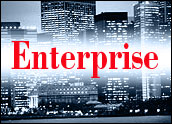
Software as a Service (SaaS), service-oriented architecture (SOA) and Web 2.0 technology are fundamentally changing the way people and organizations work, enabling greater degrees of collaboration and restructuring everything from business and operational processes to the way software is licensed and priced, according to recently released research from Forrester Research.
While the proportion of 2008 enterprise software budgets set aside for new software initiatives versus ongoing software operations and maintenance will be right in line with that of 2007, software systems design and implementation is “shifting from a functional to a process orientation,” according to Forrester’s “2008 Software and Services Data Overview.” “Instead of thinking about functional fiefdoms like finance and HR, we think of the hire-to-retire process or order-to-cash. These transcend departments and follow the lifecycle of a business process,” principal analyst and lead author R. Ray Wang elaborated.
In the midst of this upheaval, enterprise IT managers are rebelling against overly complex and opaque licensing and pricing, as well as maintenance cost increases. “Overall, decision-makers at North American enterprises report that they will continue to spend an average of 29 percent of their total IT budgets on software-related costs (licenses, maintenance, operations, and development) in 2008. Unfortunately, critical IT dollars continue to be squandered on maintenance fees — accounting for 33 percent of the entire software budget,” according to the Forrester team’s “Software Licensing and Pricing” report.
Needed: Long-Term Apps Strategies
Responses compiled from survey respondents to Forrester’s “2008 Software and Services Data Overview” reveal a need for long-term applications strategies, according to the report authors.
Improving integration between applications will be the top software priority for enterprise IT managers for the third consecutive year. Upgrading packaged applications, shifting from a functional to a process orientation, and designing a five- to 10-year packaged application strategy follow in succession. Initiatives to do with enterprise content management, master data management, adoption of SaaS and expanding use of open source software remain priorities for 2008, as was the case last year.
Enterprise resource planning (ERP), customer relationship management (CRM) and business intelligence (BI) are atop the list in terms of enterprise application categories and project priorities for 2008. CRM will continue to attract interest from first-time purchasers while ERP is going through a “major upgrade” cycle. The same is true for human capital management (HCM) applications, though to a lesser degree, according to the report.
Information and knowledge management (I&KM) projects are also on survey respondents’ project slate. Content management software and BI are at the top of the list in this category. Respondents also expressed significant interest in upgrading BI and collaboration software systems.
Adoption of the latter is growing in the enterprise. “This is mainly driven by the new way of work. We are living in a very collaborative, federated and partner-driven work environments. We need to share key data to stakeholders like suppliers, partners, non-employees, and customers,” Wang told the E-Commerce Times.
“One obvious area is B2C (business-to-consumer) software in which companies are dealing with a customer base that is used to or demands familiar paradigms like community, usability, etc.,” added Raghav Keshav, vice-president of product portfolio management at Sterling Commerce.
“These concepts seem to be creeping into the B2B world as well in the form of partner directories, increased collaborative business processes, real time collaboration, SaaS, etc. We expect this trend to continue and potentially accelerate and increase in relevance to the B2B world of enterprise software.”
SOA, SaaS and Hybrid Models
Systems integration is the key to making the transition from IT environments built around distinct functional areas, such as HR, accounting, R&D and production, to more open, accessible and shared information resources built around business processes, according to Wang. “Integration must occur at the process level and the data level. With the previous generation of apps designed around departments, the need to integrate to a process orientation is paramount for business process improvement efforts.
“Tools focus along business process modeling for human-centric processes and integration-centric processes. We see a lot of vendors replacing existing ERP systems with newer versions that are SOA designed and SaaS architected. This assists the process. Hybrid models allow for new work environments and new means of work. In some cases, you can leverage the office productivity application as your main user interface without ever going into your ERP system or knowing that it is there,” he maintained.
Increasing recognition by customers and their deployment of enterprise software “to solve business problems with processes that span traditional functional silos is driving the shift,” according to Sterling Commerce’s Keshav. “This is necessitated by changes in their business environment that are driving increased agility in execution. Although technology is not a driver, this shift is also being enabled by technology around B2B (business-to-business) integration, BPM (business process management), visibility tools, etc.”
Enterprise software vendors such as SAP are facilitating collaboration by offering comprehensive IT platforms that enable them to put a SOA in place that weaves together legacy applications and data and allows them to restructure business processes accordingly.
“The bi-directional exchange of information enables collaborative outcomes and can take a variety of forms — exchanging electronic files, XML messaging through Web services. We’re seeing more and more analysts also becoming proponents of SOA,” Russ LeFevre, SAP vice president for public services, told the E-Commerce Times.
“Even though we offer an entire enterprise platform, you have to realize that they’ve made major hardware and software IT investments. We can help them make use of them,” added CRM solution principal Dave Kuenzel.
High Maintenance
Growing interest in and acceptance of SOA, SaaS and open source software is also beginning to change the way enterprise software applications and systems are licensed and priced. Enterprises will grow more interested and more vocal in pushing for simplified and holistic approaches to usage-based pricing agreements, according to Forrester’s “Software Licensing and Pricing” report.
“SaaS will force customers to think about cost per user per month,” according to Wang. “As a pay-as-you-go subscription option to application licensing, SaaS will give business owners a taste of streamlined, more easily consumed licensing. And a primary driver for SaaS will be its bundled license, maintenance and upgrade package. This trend will fly in the face of overly complex licensing and pricing structures by more clearly and incrementally illustrating the cost and value of their investments. As a result, firms will gain more interest in and grow more vocal for simplistic and holistic approaches to usage-based pricing agreements.”
Subscription-based licensing, as opposed to perpetual licensing with annual maintenance fees, is the most prevalent form of licensing for SaaS offerings, noted Keshav. “We are also seeing a need for fixed scope services offerings as part of some of our SaaS solutions. It’s interesting to note that these concepts might be useful to leverage in some of our non-SaaS solution areas and we are selectively doing so.”
There isn’t any really good justification for vendors’ increased maintenance costs other than shareholder pressure, according to Wang. “In fact, we see that margins and profits have steadily increased on maintenance revenue. During the fifth year of a product’s lifestyle, maintenance fees are earning up to 80 percent profit!”
While Forrester sees a few more large vendors aiming to raise their maintenance fees again in 2008, in some cases IT managers are refusing to pay maintenance. Others are considering bringing in third-party maintenance offerings such as RiminiStreet and Systime that can reportedly cut maintenance costs in half.
Some vendors have made notable efforts along these lines, Wang pointed out. Some, such as SAS, have focused on bundled subscription licensing with three- and four-year terms. Others, such as Microsoft with its Dynamics product line, are reducing the number of products on the price list as well as simplifying the buying into three levels of usage. In addition, “vendors like Oracle should be applauded for having a publicly available price list while vendors like Agresso have done a great job with the post-implementation ownership experience.”





















































Social Media
See all Social Media